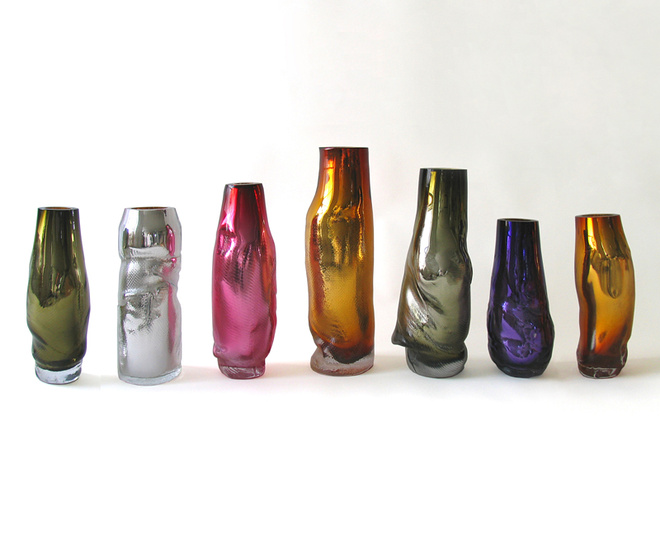
Sarah Archer (MA ‘06) is chief curator at the Philadelphia Art Alliance. Prior to this, she was director of Greenwich House Pottery and curatorial assistant at the Museum of Arts and Design. Her articles have appeared in the Journal of Modern Craft, American Craft, Artnet, Ceramics: Art and Perception, Hand/Eye, Modern Magazine and The Huffington Post. She most recently guest-curated Bright Future: New Designs in Glass at the Pratt Manhattan Gallery (February 10 through May 5, 2012).
Your upcoming exhibition, Bright Future: New Designs in Glass, at the Pratt Manhattan Gallery, is timed to coincide with the 50th anniversary of the development of studio art glass in America. What do you hope the exhibition will accomplish?
What I learned in the process of developing the show and what I hope people will take away from it is that glass is full of possibilities they might not be aware of. Bright Future includes both objects for use and works of art in an effort to contrast the way people work with the material to achieve different results, and to demonstrate connections between industry and the glass studio. The exhibition looks at architecture, electronics, tableware, lighting and sculpture— beyond the furnace, so to speak.
This approach reminded me that what we non-chemists call “glass” is actually only one typeof glass, called soda-lime. Most household goods like Pyrex are made from tempered soda-lime glass, and artists have been using it for millenia. Meanwhile, materials scientists are continuing to develop different types of glass for electronics like Corning’s Gorilla Glass, which is used in the iPhone and iPad, or glass-reinforced concrete, a new translucent building material. Glass can be alloyed with metal, made thin, flexible and strong, it can even have circuitry printed on it. It has a lot of advantages for architects and designers concerned with sustainability: it is not a rare or precious substance, and it is not plastic. So on the one hand, glass has an incredible aesthetic and technological history stretching back over five thousand years that is still inspiring artists today, and on the other hand it is emerging as a high-tech material that is continuing to yield new possibilities for designers. I find that amazing.
Was glass your focus while studying at the Bard Graduate Center? If not, how did you find yourself involved with the subject?
I did not focus on glass, though I did take a wonderful seminar on Ancient Ceramics and Glass with Elizabeth Simpson which included a field trip to Corning. Prior to that I didn’t know much about the science of glass, and the combination of being able to view live demonstrations of glassblowing and seeing their collection (which includes things like Roman cage cups) was spectacular. My focus since graduating has been largely on ceramics, and I have always considered ceramics and glass fraternal twins because they have so much in common.
But working with Pratt was actually the result of an interest in contemporary lighting. I developed an exhibition idea that focused on new lighting designs and many of the works combined glass and LEDs. I showed it to a curator who then recommended me to Pratt for this project realizing that there was common ground, so I retooled the proposal but retained quite a few lighting designs, and they ran with it.
What brought you to the Philadelphia Art Alliance? Any plans at that institution for 2012 that you are particularly looking forward to?
I have this funny combination of a love for historic buildings and working with emerging artists, so the chance to curate contemporary exhibitions in a 1905 mansion just hit all the right notes. Because it was once a private residence, the PAA has domestic proportions (albeit quite grand) and artists who are concerned with history, decoration, fabrication, luxury, or domesticity tend to fall in love with it. It is also one of the few organizations I know of that does not have the word “craft” in its name, but wishes it did, rather than the other way around. Our focus is pretty broad in the sense that we show functional objects but we also present site-specific installations and works of art that address materiality in some way.
2012 is shaping up to be exciting. In particular I’m eager to see what Adam Wallacavage’s installation of Jules Verne-inspired chandeliers will look like and what dramatic wall color he chooses, and Sabrina Gschwandtner’s translucent quilts hand-assembled from vintage film cells instead of fabric. Much of what we show has a kind of normal analog out in the world—quilts and chandeliers are commonplace, but my hope is that when people visit our galleries, they will start to look at things differently for having seen the way artists envision “everyday” objects.

